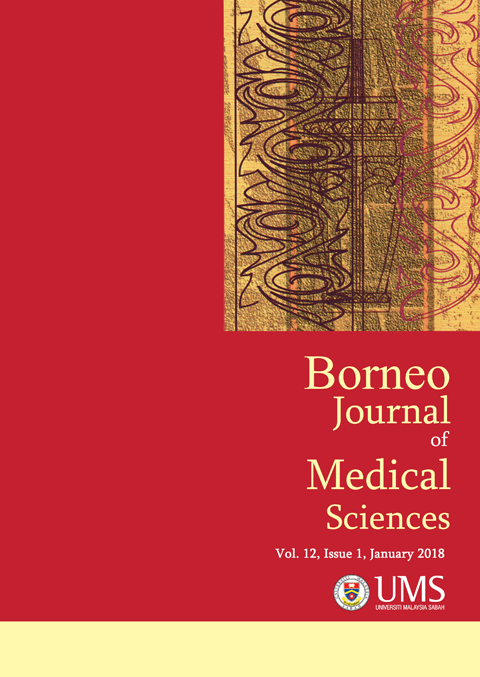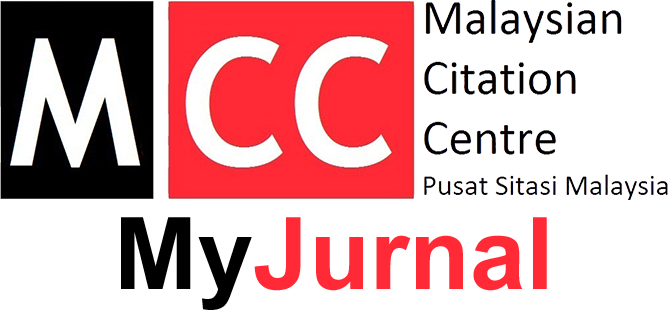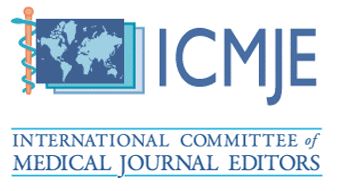Factors Affecting the Prescribing Pattern of Non-steroidal Anti-Inflammatory Drugs at Outpatient Departments in Government and Private Polyclinics in Kota Kinabalu, Sabah
DOI:
https://doi.org/10.51200/bjms.v12i1.845Keywords:
NSAIDs, prescribing pattern, socio-economic statusAbstract
The main objective of this study was to obtain information regarding the effects of educational and socio-economic status of the patients on the prescribing pattern of non-steroidal anti-inflammatory drugs (NSAIDs) by the qualified medical personnel in the outpatient departments (OPDs) of two selected polyclinics in Kota Kinabalu, Sabah, Malaysia. A total of 200 selected patients (100 from each polyclinic) attending the OPDs were interviewed using a questionnaire. Again data were collected, photocopied and later analyzed. Educated and higher income group of patients mostly attended in a Private Polyclinic (PPC) whereas less educated and lower income group of patients generally attended UMS Polyclinic (UPC). This was reported as a probable reason for the wide variations in the prescribing pattern with respect to pharmacological sub-classes of NSAIDs in the OPDs of two polyclinics. The present results strongly support that probable reason. The number of patients taking NSAIDs before coming to hospital was more in PPC compared to UPC. They were influenced by pharmacists, friends and doctor’s advice given previously. In conclusion, it may be mentioned that overall prescribing pattern of NSAIDs among two polyclinics is rational.Downloads
Published
How to Cite
Issue
Section
License
Borneo Journal of Medical Sciences
Copyright transfer and contributions agreement to publish in Borneo Journal of Medical Sciences (BJMS)
Transfer our author right to Borneo Journal of Medical Sciences (BJMS Publishers) along with title, interest in article without any limitations. The Journal shall own the work, including 1) copyright; 2) the right to grant permission to republish the article in whole or in part, with or without fee; 3) the right to produce preprints or reprints and translate into languages other than English for sale or free distribution; and 4) the right for electronic/visual reproduction, electronic storage and to republish the work in a collection of articles in any other mechanical or electronic format or printed publications.
We, the authors certify to participate sufficiently in the intellectual content, conception and design of this work or the analysis and interpretation of the data (when applicable), as well as the writing of the manuscript, to take public responsibility for it and have agreed to have our name listed as a contributor. We believe the manuscript represents valid work. Neither this manuscript nor one with substantially similar content under our authorship has been published or is being considered for publication elsewhere, except as described in the covering letter. Any such involvement, publishers of BJMS are not responsible and the authors are held for any untoward practices if any. Any other reproduction of the said article requires the permission from the publisher.
Authors also state that, the work is original and is not infringing with the rights of others and copyrights. Author also further declares that, each co-author have contributed significantly and have accepted to be co-authors for their significant contribution for the work.
We certify that all the data collected during the study is presented in this manuscript and no data from the study has been or will be published separately. We attest that, if requested by the editors, we will provide the data/information or will cooperate fully in obtaining and providing the data/information on which the manuscript is based, for examination by the editors or their assignees.
We give the rights to the corresponding author to make necessary changes as per the request of the journal, do the rest of the correspondence on our behalf and he/she will act as the guarantor for the manuscript on our behalf. All persons who have made substantial contributions to the work reported in the manuscript, but who are not contributors, are named in the Acknowledgment and have given us their written permission to be named. If we do not include an Acknowledgment that means we have not received substantial contributions from non-contributors and no contributor has been omitted.








1.png)




